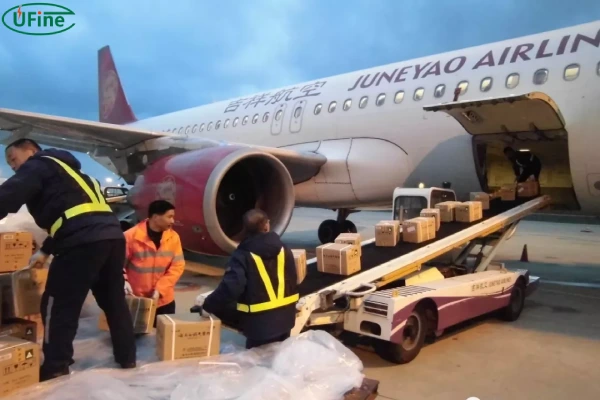When purchasing batteries, some customers will ask what kind of shipping method you choose. Can it be transported by plane? Regarding this question, as a professional lithium battery manufacturer, we have many years of experience in transporting large quantities of lithium batteries. This article will explain the air shipping of lithium batteries in detail. Let’s take a look!
Part 1. Transporting lithium batteries on airplanes
Lithium batteries have almost become necessary for people’s work and life. Mobile phones, computers, cameras, etc., are inseparable from lithium batteries. However, lithium batteries are flammable and belong to Class 9 dangerous goods in China. Today, the shipping of lithium batteries has become the focus, and the current management of hazardous goods and air shipping is complex.
In order to avoid more aviation accidents caused by lithium batteries, the International Civil Aviation Organization (ICAO) issued a temporary ban at the end of February 2016. In view of the fact that lithium batteries may cause fires, all rechargeable lithium batteries will be prohibited from being checked in on passenger aircraft starting April 1, 2016.
Although this ban by ICAO does not have a mandatory legal effect, most countries choose to comply. ICAO said that many pilots have long requested to stop the shipping of lithium batteries in flight. Most airlines have automatically stopped the lithium batteries cargo business.
Part 2. Why are lithium batteries unsafe on airplanes?
The risks associated with the shipping of lithium batteries, especially on aircraft, are also increasing. Since it was put on the market, there have been many safety accidents related to air transportation, as well as many accidents associated with the transportation of lithium batteries and equipment powered by lithium batteries. These accidents occurred both in flight and before and after loading and unloading.
In fact, under normal circumstances, lithium batteries’ positive and negative electrodes are separated by a layer of separator film. The film has many micron-sized pores. This allows lithium ions to shuttle freely through it. But when the lithium battery is subjected to some stimuli, such as severe vibration, impact or extrusion, or its quality problems, it will cause the internal separator film to rupture. This is when the positive and negative electrodes of the lithium battery will come into direct contact, causing a short circuit and quickly generating a lot of heat and pressure. In addition, the electrolyte solution is a flammable substance, and high temperature will cause it to flow out of the battery. It will instantly burn and explode when it encounters oxygen.
Once the lithium battery burns and explodes, however, the fire extinguishing agent equipped on the aircraft will not work to extinguish the combustion of the lithium battery.
Part 3. How can lithium batteries be safely transported by aircraft?
Nowadays, accidents caused by non-standard behaviors in the packaging and shipping of lithium batteries are becoming increasingly important. Work policies and regulations are essential if you want to transport lithium batteries efficiently and safely by aircraft.
Relevant international organizations have issued a number of regulations, and the management of lithium battery shipping has become increasingly strict. For example, the “Technical Instructions for the Safe Transport of Dangerous Goods by Air” (hereinafter referred to as “TI”) issued by the International Civil Aviation Organization (ICAO) and the “Dangerous Goods Regulations” (from now on referred to as “DGR”) issued by the International Air Transport Association (IATA) have put forward specific requirements for the air passenger and cargo transportation of lithium batteries.
These include testing standards, energy and quantity restrictions, and packaging requirements for air shipping of lithium batteries. Airlines worldwide operate the air transportation of lithium batteries to these requirements. The Civil Aviation Administration of China also manages the air shipping activities of lithium batteries accordingly.
At the same time, these regulations and regulations are constantly being improved. For example, IATA revises the regulations for lithium battery shipping every two years. According to these regulations and regulations, the shipping of lithium batteries must meet the following basic packaging requirements and transportation requirements.
Part 4. How to safely package lithium batteries?
In addition to policies and regulations, the correct packaging of lithium batteries is also crucial for battery shipping.
- Without considering exceptions, these batteries must be transported in accordance with the restrictions of the applicable packaging instructions of DGR4.2. They must be packed in UN specification packaging as specified in the DGR Dangerous Goods Regulations in accordance with the applicable packaging instructions. And the corresponding number must be fully displayed on the packaging.
- In addition to the applicable correct special transport name and UN number mark, the lithium battery packaging that meets the requirements must also be affixed with Class 9 hazard labels.
- The shipper must complete the dangerous goods declaration form and provide the corresponding dangerous package certificate.
- Provide a shipping appraisal report issued by a certified third-party organization. And show that it is a compliant product (including the UN38.3 test and 1.2 meter drop packaging test).
Part 5. Requirements for lithium battery air transport
- Lithium batteries must pass the safe tests, such as UN38.3 test requirements and the 1.2-meter drop test (the UN38.3 test is specifically for lithium batteries to be transported by air)
- Dangerous goods declaration documents provided by the shipper, marked with the UN number;
- The outer packaging must be labeled with Class 9 dangerous goods and have an “all-cargo aircraft only” operation label;
- Its design should ensure that it prevents explosion under normal shipping conditions and is equipped with effective measures to avoid external short circuits;
- The outer packaging is sturdy, the battery should be protected to prevent short circuits, and contact with conductive materials that can cause short circuits must be prevented in the same packaging.
- Batteries installed in equipment for shipping also have additional requirements: the equipment should be fixed to prevent the battery from moving inside the packaging. The packaging method should prevent the battery from accidentally starting during transportation. The outer packaging should be waterproof or waterproof by using an inner lining (such as a plastic bag). Unless the structural characteristics of the equipment itself already have waterproof properties.
- Lithium batteries should be loaded on pallets to avoid strong vibration during shipping. The vertical and horizontal edges of the pallet are protected with corner guards;
- The weight of a single package is less than 35kg;</liS
- Airlines should pay attention to the following when operating:
- Only full cargo aircraft are allowed.
- Lithium battery air transport information appears on the captain’s notice.
- Enhance the crew’s safety awareness.
- Inform the first person on site of the cargo hold’s type and quantity of batteries.
- The US FAA requires that lithium batteries be loaded in the aircraft’s Class C cargo hold, and equipped with a smoke detection system, alarm system, and fire extinguishing system.
Part 6. Final thoughts
The above regulations effectively reduce safety accidents caused by lithium batteries in air shipping. In addition, the correct packaging of lithium batteries and various safety test reports are crucial, which together ensure the safety of lithium battery air transportation.
Related Tags:
More Articles

How to Choose the Right Electric Fence Battery?
Choosing the right electric fence battery is key to security. This guide helps you pick a reliable farm, garden, or animal power source.
What Are Lithium Pouch Cells?
Explore how lithium pouch cells work, their structure, advantages, and uses. Learn from a trusted supplier like Ufine Battery for custom lithium solutions.
The Evolution of Ring Battery Pack Technology in Lithium Battery Manufacturing
Ring battery packs are reshaping lithium battery tech. Discover their evolution, key uses, and why they matter for the future of energy storage.
Lithium vs Lithium Salt: What’s the Difference?
Lithium is a pure metal, while lithium salts are stable battery compounds. Learn their key roles and differences in battery manufacturing.
What You Need to Know About AA 3.6V Lithium Battery
Learn all about AA 3.6V lithium batteries—voltage, size, capacity, uses, and the best replacements. Discover why they’re powerful, and highly reliable.






